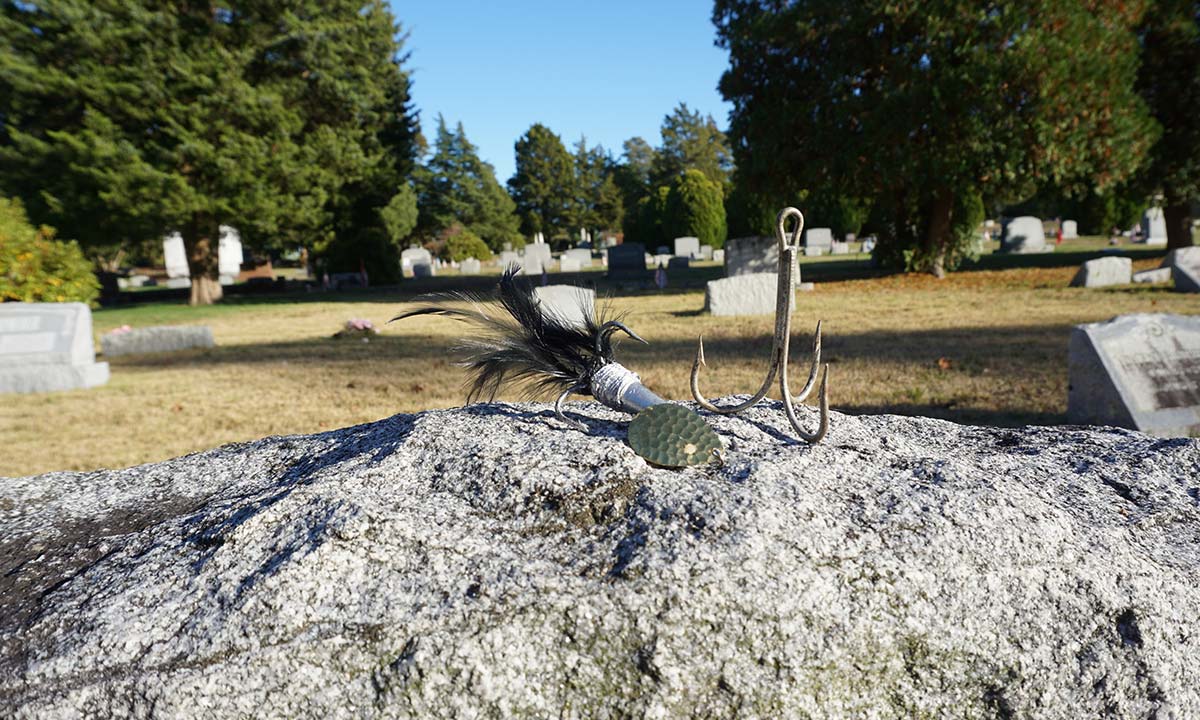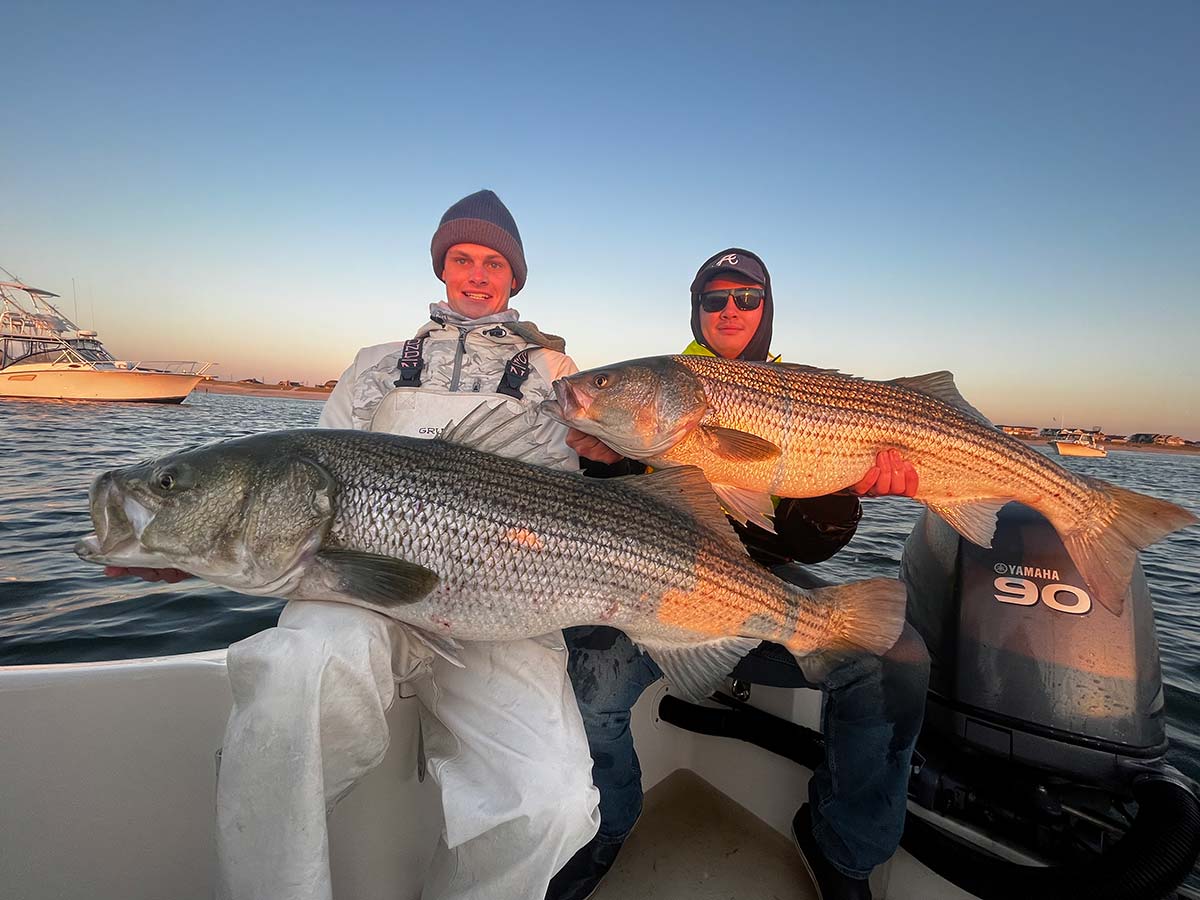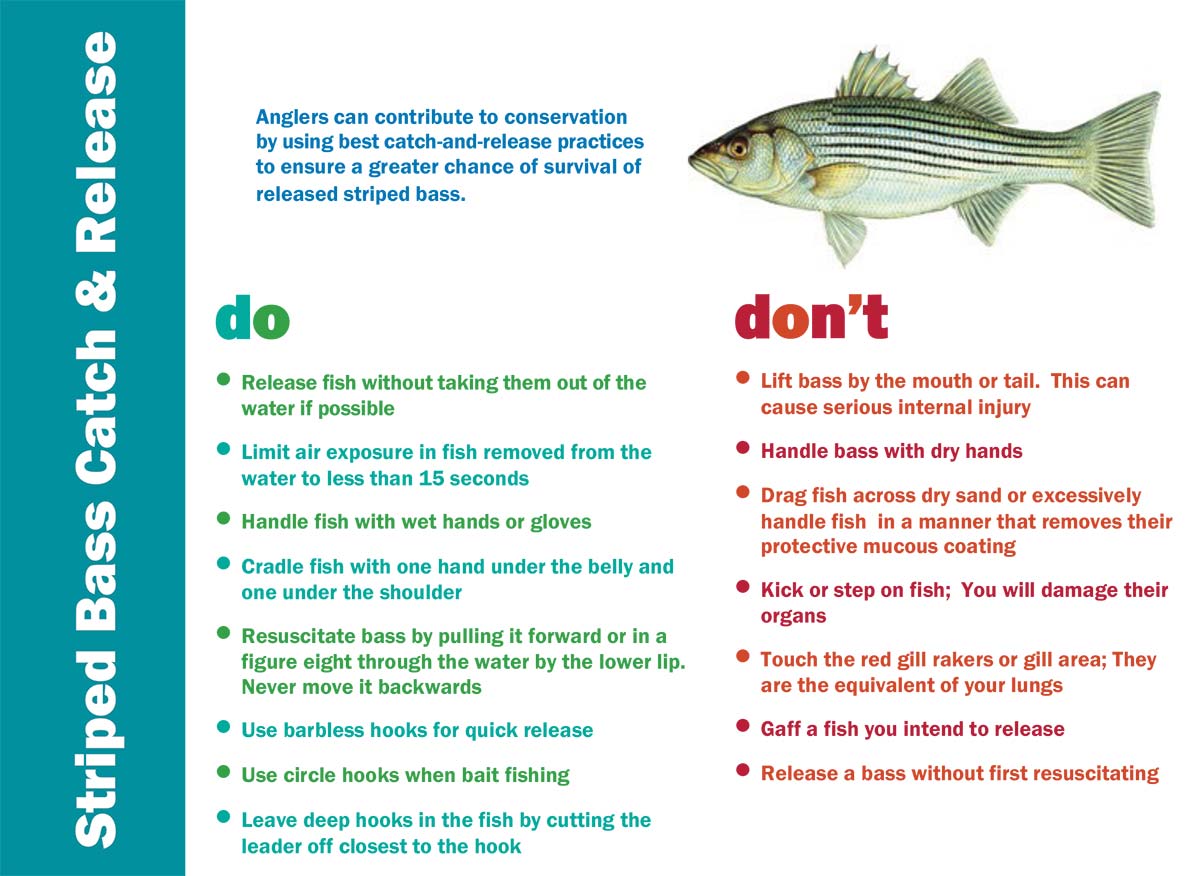
Apparently, not everyone got the memo.
On Saturday, October 8 at approximately 5:30 a.m., my wife Michele and I were just pulling on to the Garden State Parkway heading north to a friend’s lake house when *Baba O’Riley by The Who came on the radio. I can personally attest to the fact that jumbo stripers absolutely love that song; that could be the result of the synthesized ostinato from the Lowrey organ played by Pete Townshend, or my own superstitions, I’m not sure.
I knew from the opening notes of that song blaring across my truck radio that morning that stripers were on the feed somewhere. Capt. Brian Rice of Jersey Devil Sportfishing is probably cursing me right now for letting that cat out of the bag, but Townshend’s repeating marimba pattern, coupled with his own guitar work and John Entwistle’s driving bass; let’s just call it a lucky a song for our Manhattan Cup tournament crew.
The connection between music and good fishing isn’t exactly unheralded; author Ernest Hemingway kept an old, portable gramophone aboard the Pilar and played music while out on the big game grounds. I once read that one of Hemingway’s favorite artist was jazz great Fats Waller (Ain’t Misbehavin’ and Honeysuckle Rose) whose music Hemingway believed helped bring fish to the baits while on the troll.
At that same moment that Michele and I were singing “teenage wasteland” in the pickup heading for the mountains, back along the beaches near our house the striped bass fishing was turning to epic. After two weeks of hurricane-induced onshore winds and heavy surf from Fiona and then Ian, winds laid down from the west and the first wave of massive striped bass arrived from the east along the Jersey Shore. Yes, the cat’s away…
By the time I returned home on Sunday afternoon, winds were still blowing offshore as menhaden nosed up against the wind with jumbo stripers pushing bait around along the beach. While the Saturday bite was completely off the hook (from what I learned later), the ensuing 3-1/2 days of a bunker busting bass bonanza was a heckuva way to open the 2022 fall run at the Jersey Shore.
However, in those first few days of fall action, I spoke with a lot of surfcasters who like myself had trouble pulling a fish out of these bunker pods. Polaris style poppers, pencils, metal-lip swimmers, soft plastic swim shads, spooks, SP Minnows and Mag Darters; many of us tossed everything in our bag to no avail, then left the beach and returned with new options only to get stymied again. The song remains the same, as they say.
Some folks completely lost their wits during that four-day melee, especially when stripers were just outside feeding actively on bunker; at that point, live bunker was about all that would tempt a “personal best” striper from the buffalo herd. At one point just after sunup on Tuesday, October 11, I was standing in front of a hot school of fish, cycling through everything in my bag, as a caster next to me using a weighted treble snagged a bunker and opened his bail, waiting for a pickup. Clearly I wasn’t the only one finding a tough go at it plugging the beach to start the week, as friends told me later that the ol “snag and drop” method of striper fishing was used quite a bit during the menhaden maelstrom.
So let’s just say that in all the madness of the opening blitz of fall bass, some folks just got a little overwhelmed, forgetting momentarily about all that we’ve learned in the last 3 years of striped bass debate.

Getting In Tune
When the slot limit was put in place for striped bass back in 2020, it was meant to preserve the big old fat fecund female fish (BOFFFFs). Those jumbo breeders are the ones that are supposed to give us the next big recruitment year; they’re also the same class of fish that hit the New Jersey beaches in early October.
In an effort to decrease the mortality rate on released striped bass, a circle hook mandate was also added to the striped bass fishery. Anyone fishing natural bait (bunker, clam, eel, etc.) when targeting striped bass is required to use an inline circle hook. Thus, you can snag a bunker for bait, but you have to reel it back quickly and transfer it ton an inline circle hook. That means the ol’ snag and drop is dead.
For those who participated in all of the striped bass management discussion, recall the debates over potentially closing weeks at clip during the season to all striper fishing – yes, even catch and release. There was also talk about completely shutting down spawning areas, the Raritan Bay for example where the spring run of personal best striper fishing has been phenomenal in recent years.
There was a lot of hand-wringing during the striped bass debate, many fingers being pointed at “the other guy.” But at the end of the day, the idea was to reduce the mortality rate on the BOFFFFs, the mothers of our future attention. And that requires a bit sacrifice and attention by all of us – boater and surfcaster! A quick walk along the Ocean County beaches in the days following the initial buffalo stampede at the Jersey Shore would be a stark reminder, with the rotting corpses of mishandled jumbo stripers being picked apart by seagulls from Point Pleasant to Island Beach, and beyond.
Not everyone is happy with the relatively new regulations on striped bass, like the slot limit for keepers or the circle hook mandate when using natural baits. And truth be told, I did my own share of “snag and drop” back in the mid 2000’s when it seemed as if you could walk for miles across the backs of blitzing striped bass without getting your feet wet. But that was then, this is now, as we are all responsible for what happens tomorrow. Weighted trebles hooked deep into the gills or bellies of striped bass increase the mortality rate of big stripers; our new mission is to increase survivability of those released fish, in order to protect the breeders and rebuild the striped bass population.
| PROTECT & PRESERVE |

Stripers For The Future is an ongoing research and education campaign spearheaded by Monmouth University’s School of Science. With support from a number of regional partners including fishing clubs and local businesses, the Stripers for the Future brochure can be found in many local tackle shops and features a good list of Do’s and Don’ts that anglers should keep in mind when safely releasing striped bass. |
Does it make striper fishing harder? Yeah, sure! But again, it’s designed to keep more of the BOFFFFs in the fishery in hopes that we’ll see a robust year class of young-of-the-year striped bass come spring. It’s sacrifice today, in hopes that population will improve for tomorrow, which of course is a promise we’ve heard that from fisheries managers before. But striped bass management is an emotional, highly charged subject; and while not everyone entirely supports the slot and circle management combo, the ultimate goal is to rebuild the striper population.
As noted during the November meeting of the Atlantic States Marine Fisheries Commission (ASMFC), anglers released 28.7 million fish in 2021, 2.6 million of which were assumed to have died. In fact, from 2018-2021, ASMFC assumes that roughly 50% of total striped bass removals by the recreational fishing community are from release mortalities. We’ve got to get those numbers down.
It’s not always going to be stupid fishing; at the ripe old age of 55, I never experienced that epic style of striper fishing until sometime in my 30s. As for that first buffalo stampede of the year, it may have passed quickly, but more waves of good stripers arrived on a regular basis from the east in the ensuing weeks, many of which were more prone to attacking artificials. Hopefully there’s more to come!
The exodus is not yet here; not yet. But if we’re going to be happy about the state of the future striped bass fishing, we do need to get together on the same page with remembering the purpose behind the new rules.
Before we get much older.
(*The song Baba O’Riley by The Who is often mistakenly referred to as Teenage Wasteland, and ‘spell check’ mistakenly allowed the title to be printed as Baby O’Riley in the December print edition of The Fisherman.)




